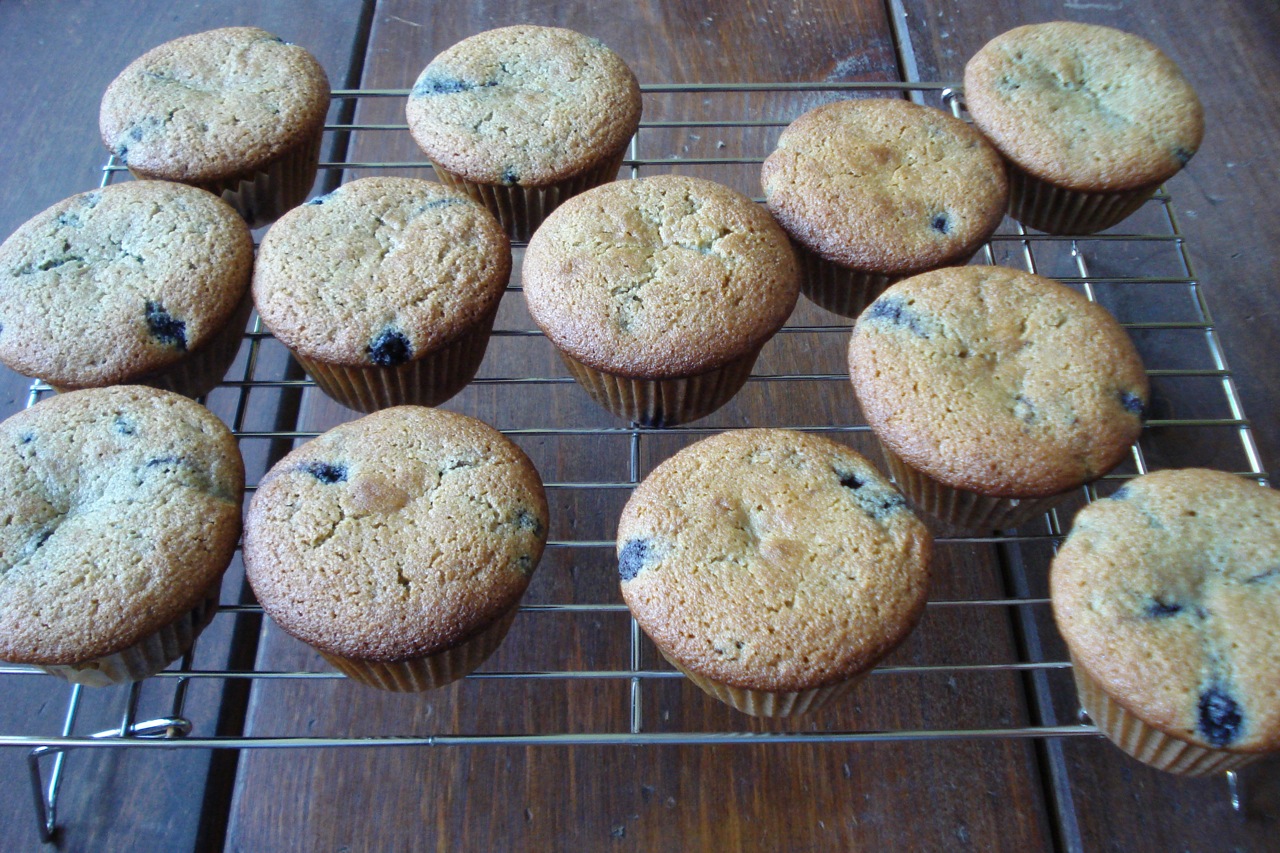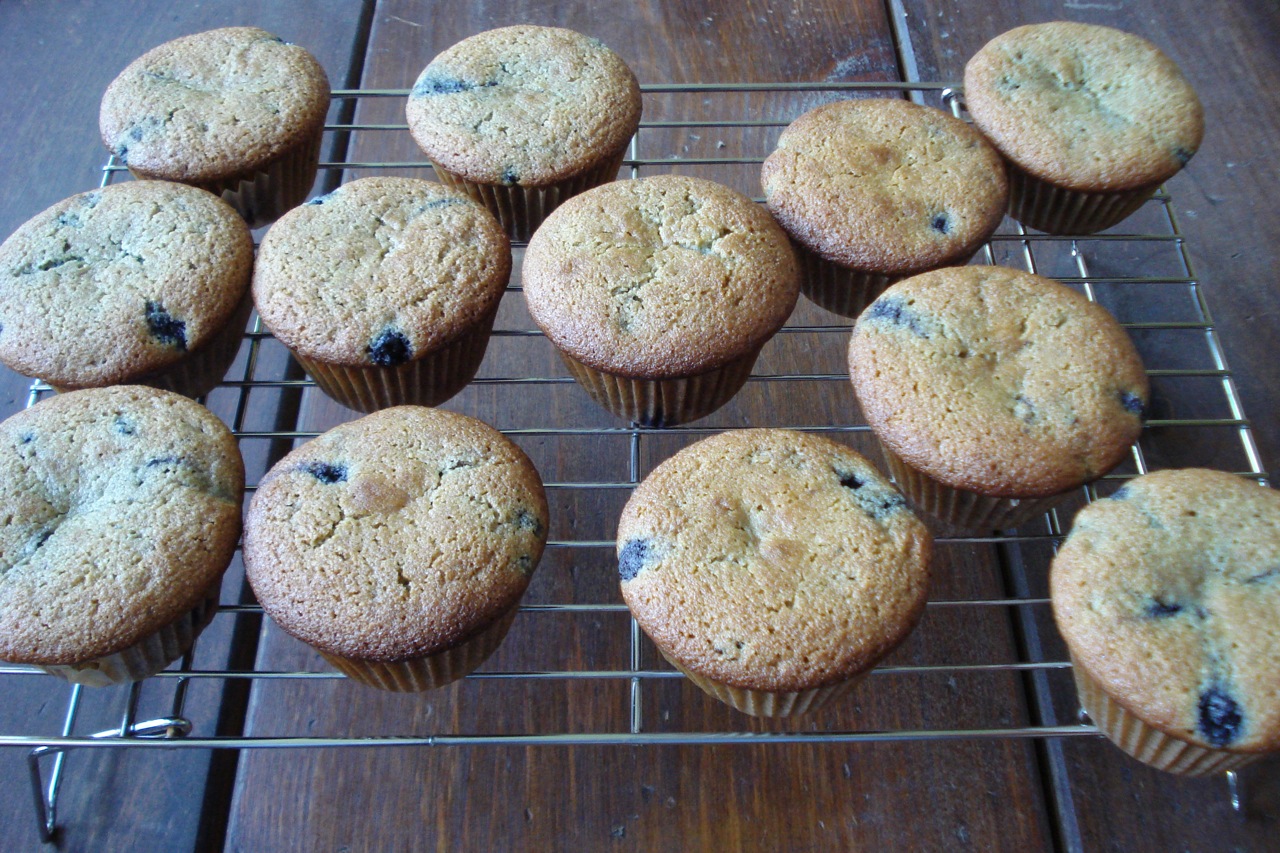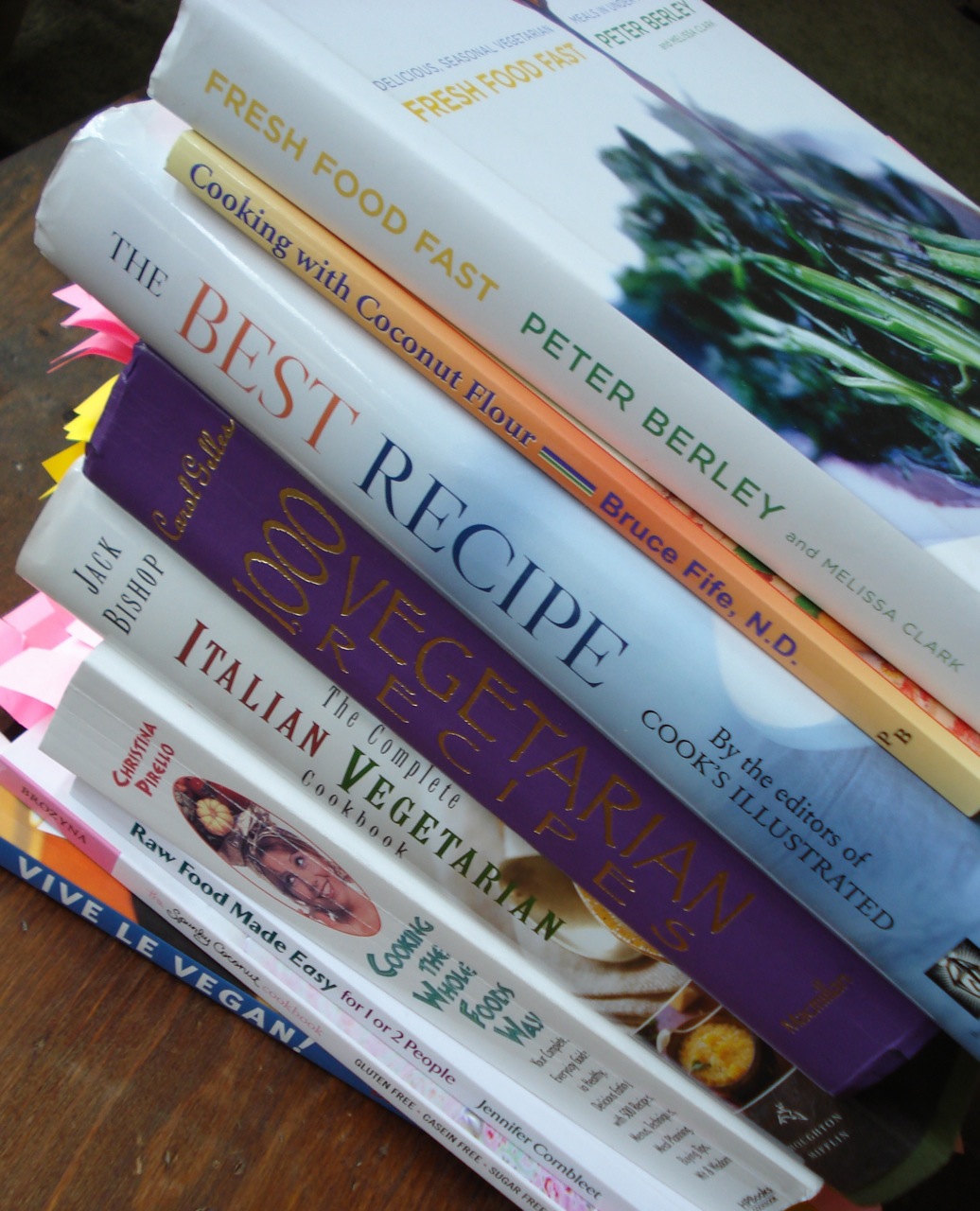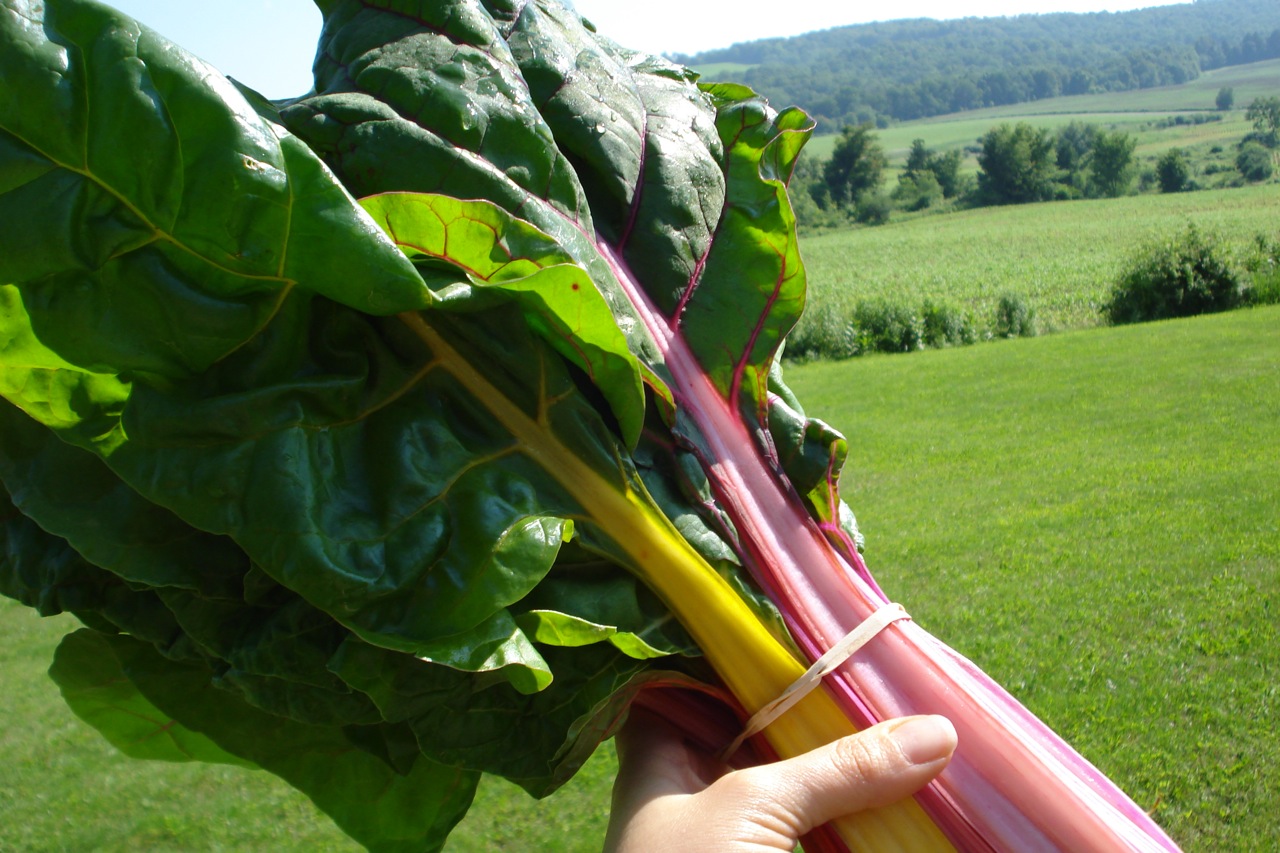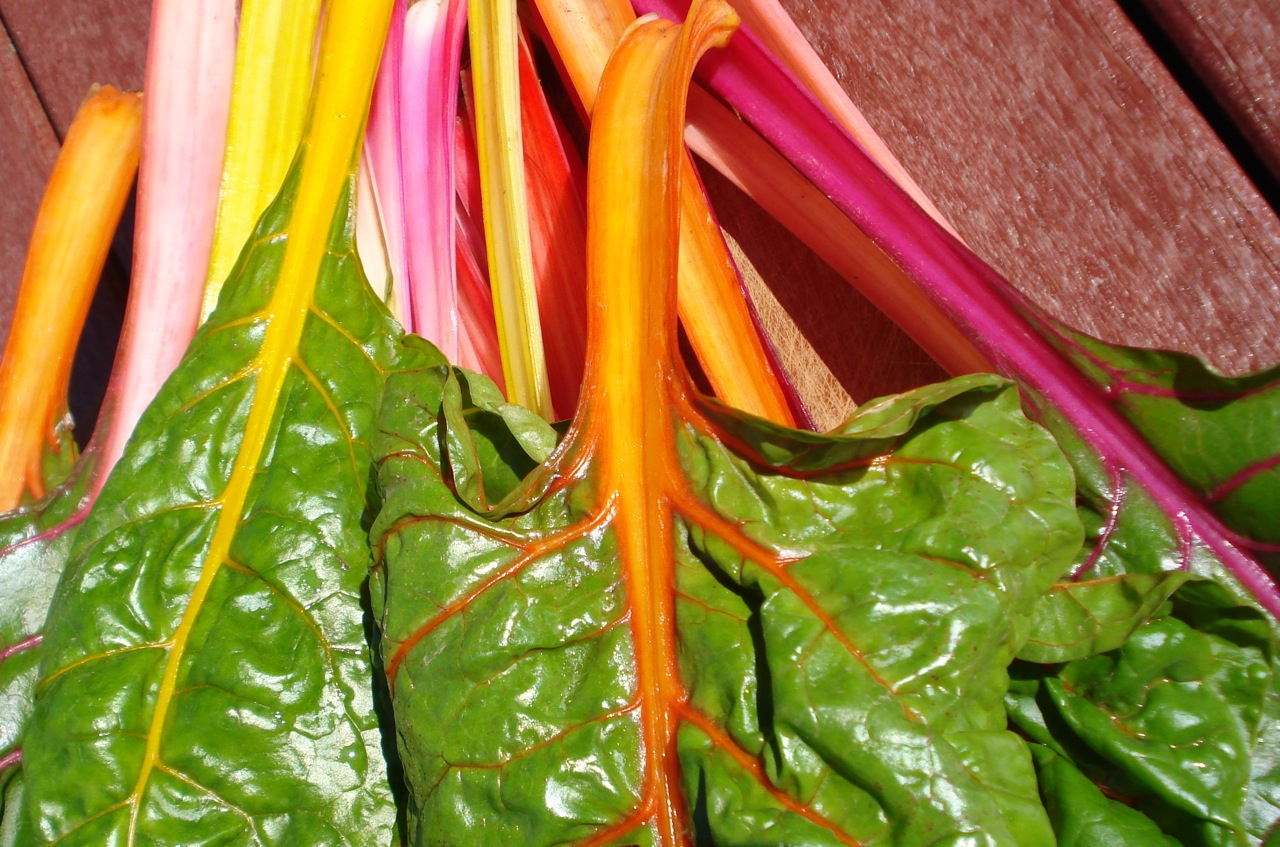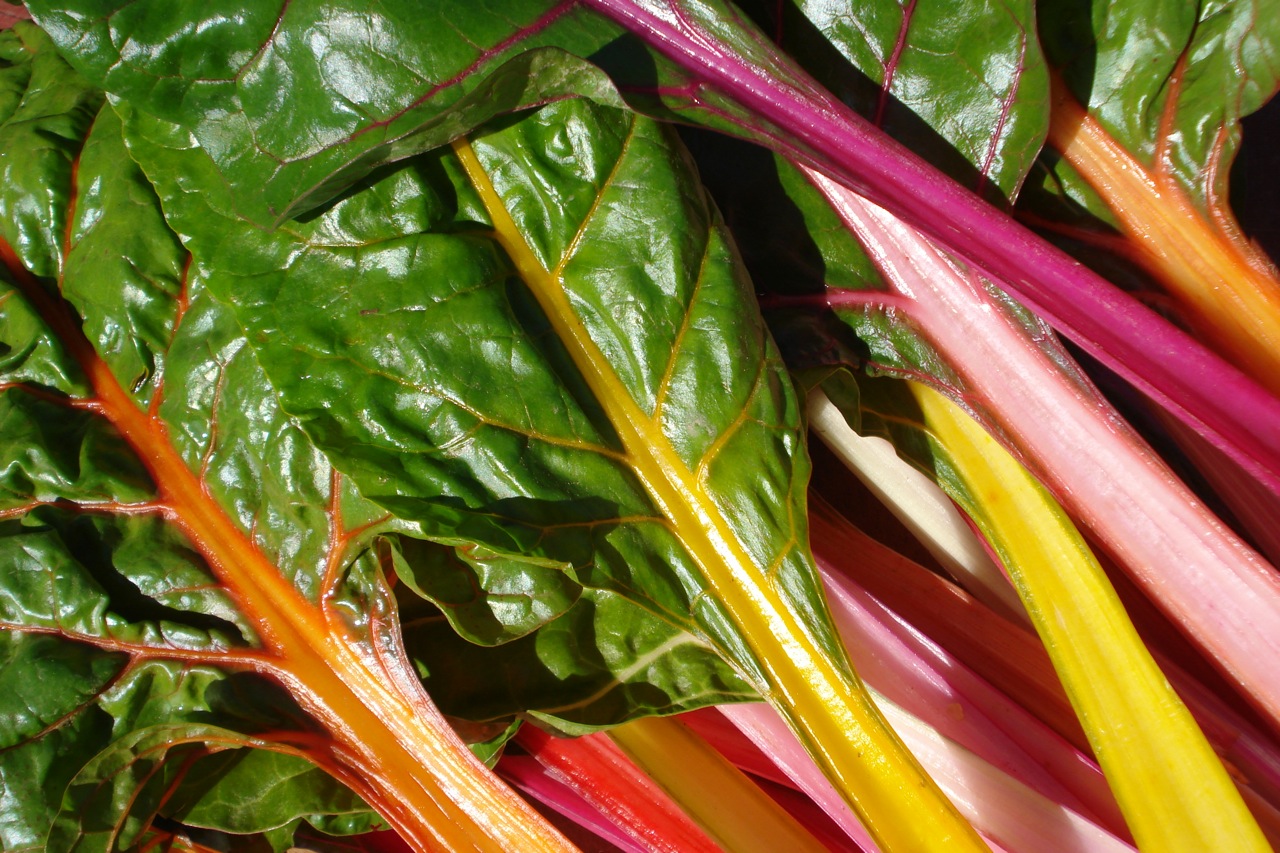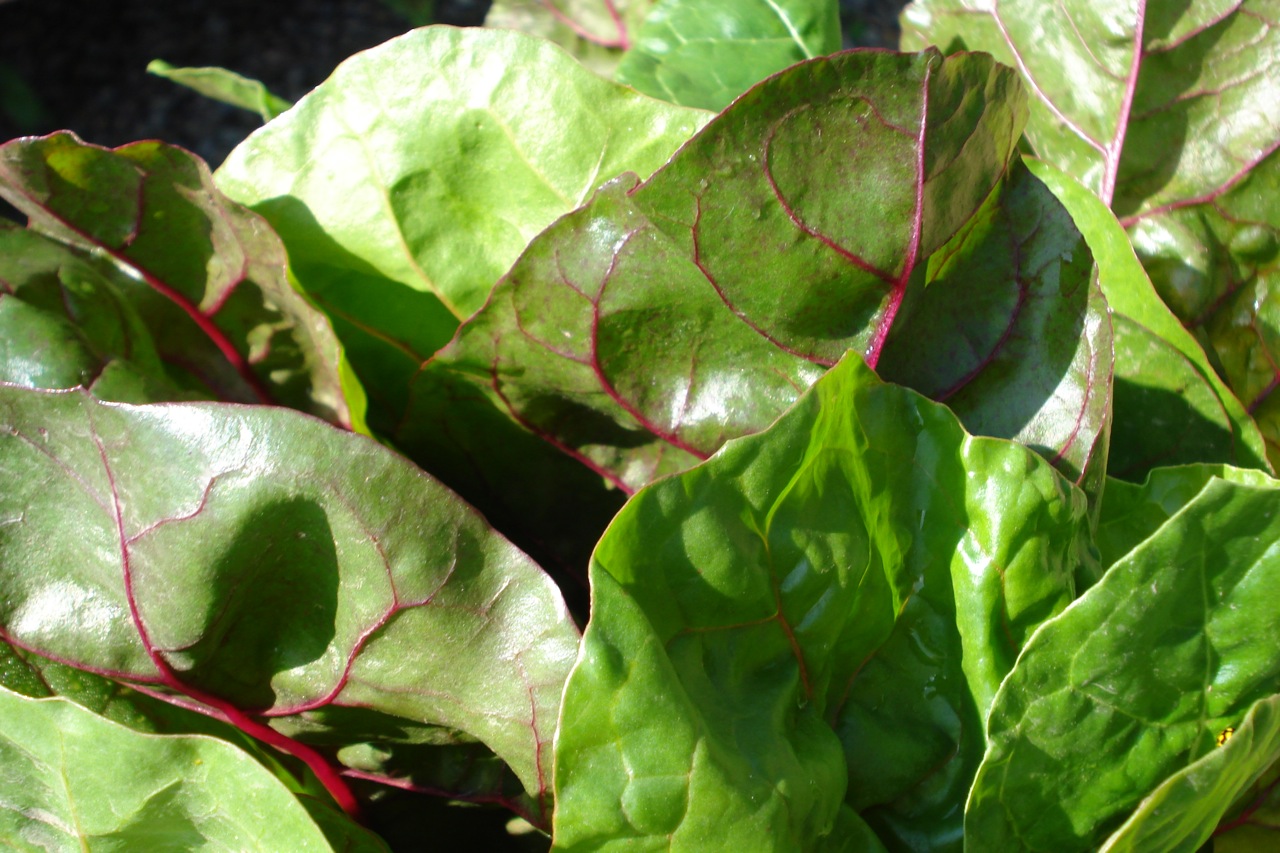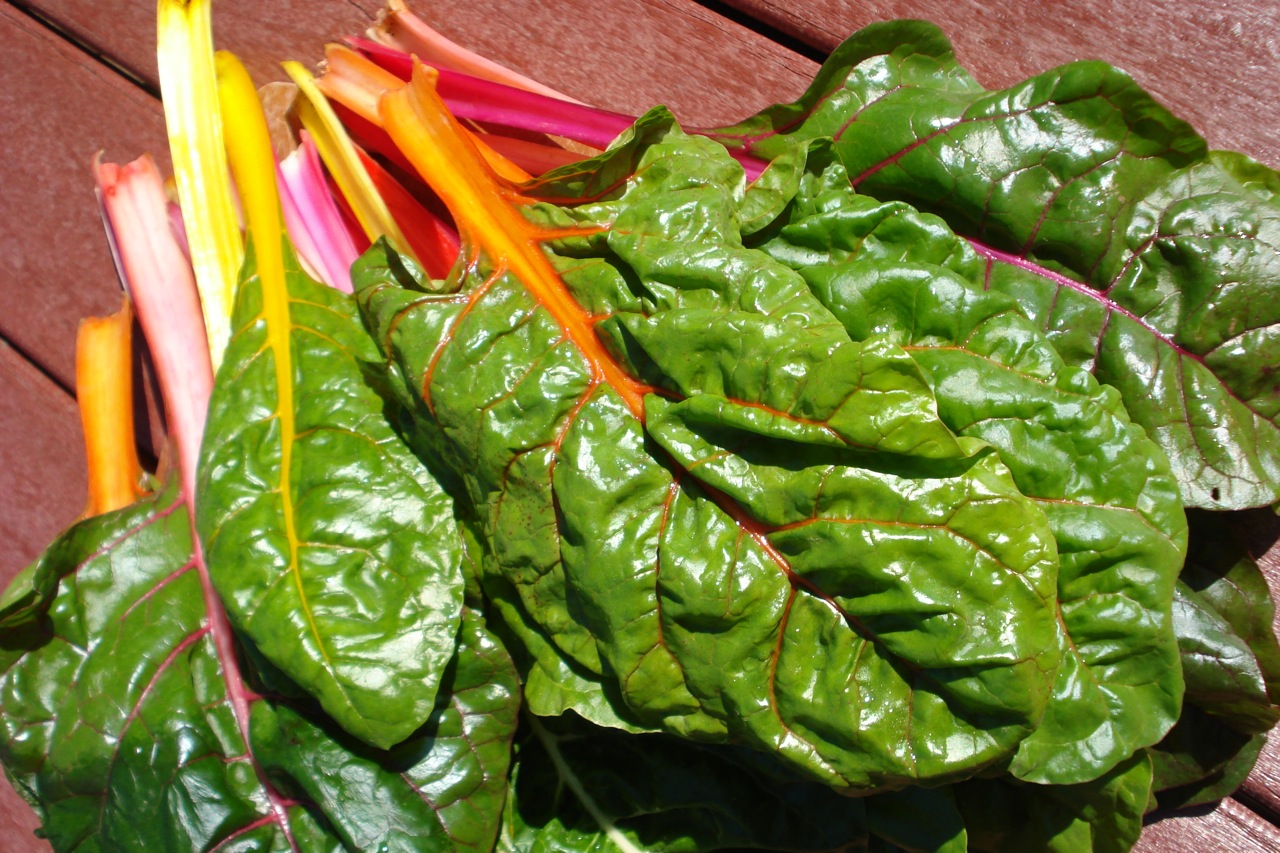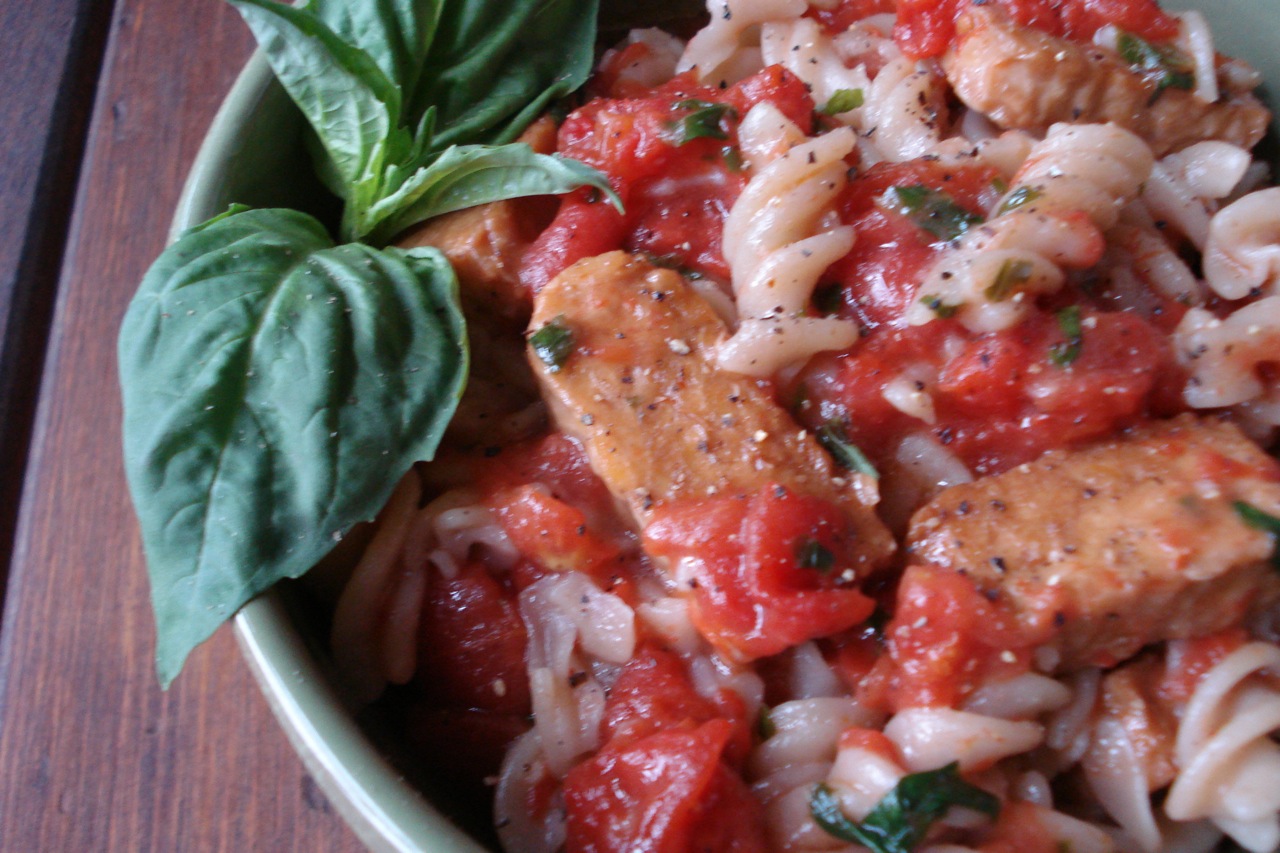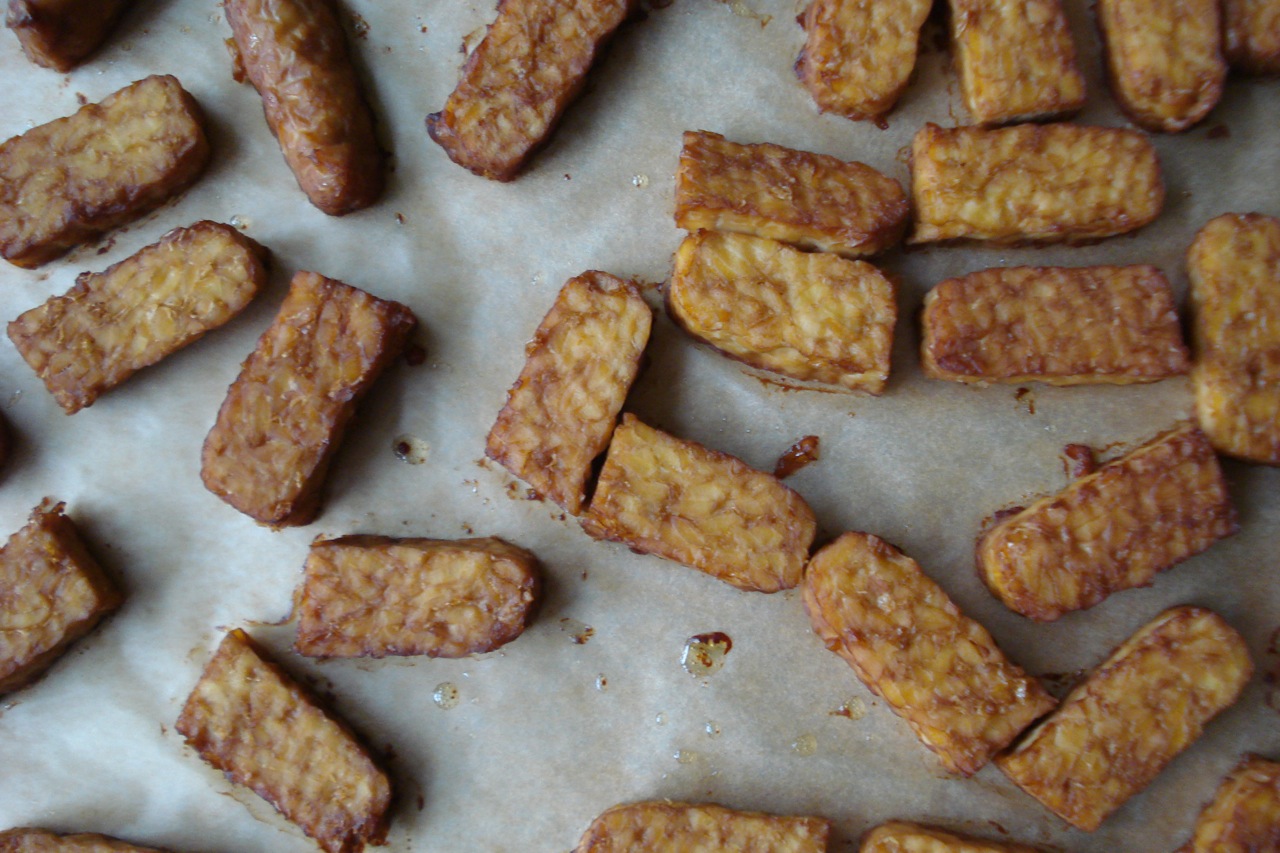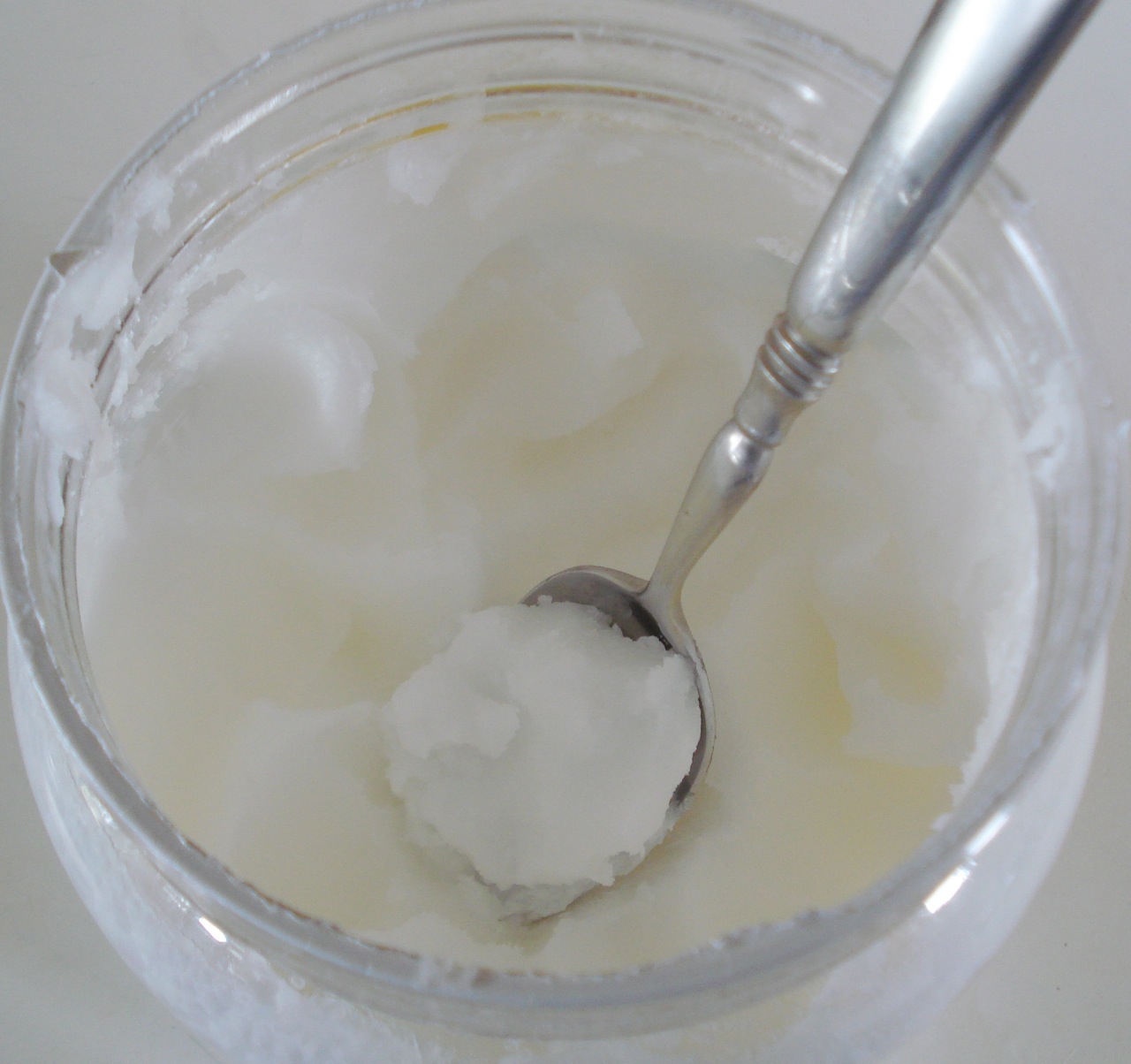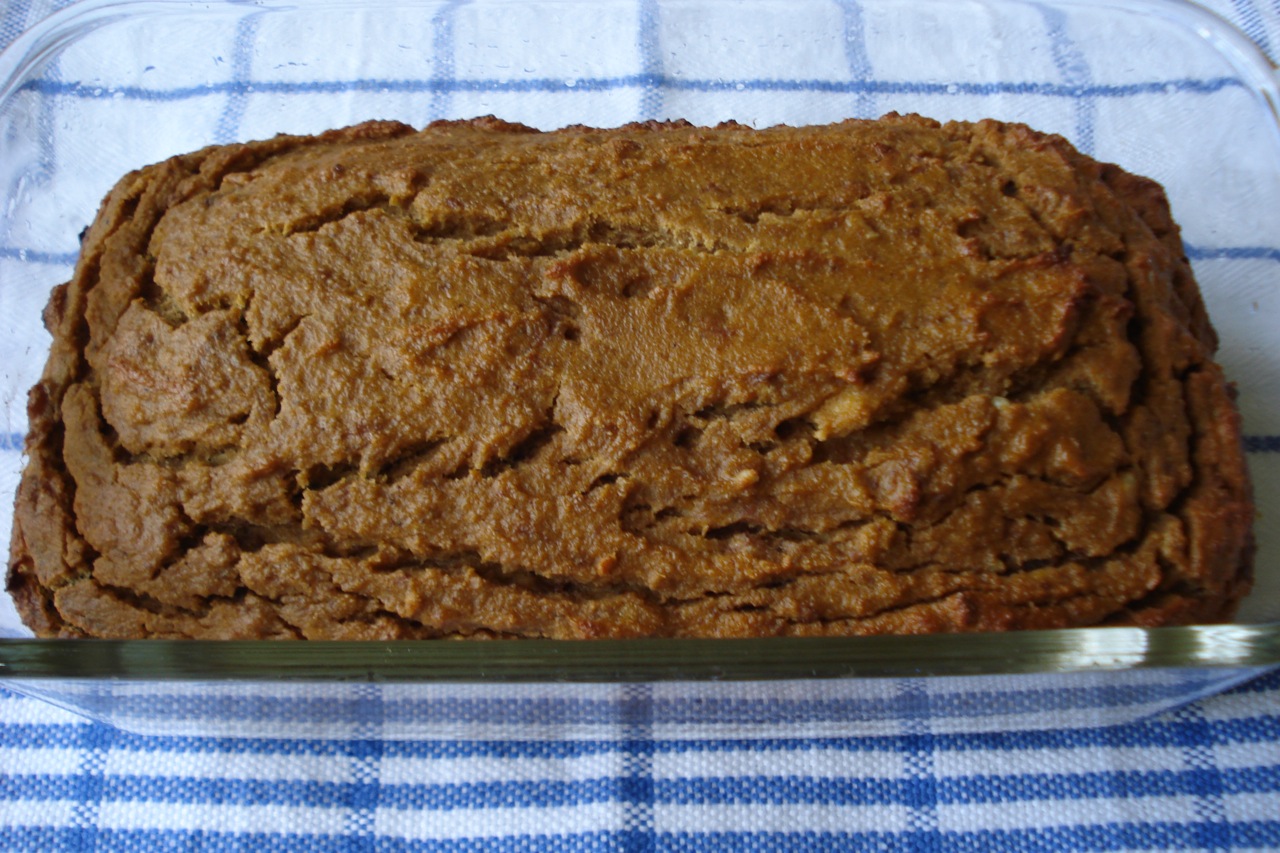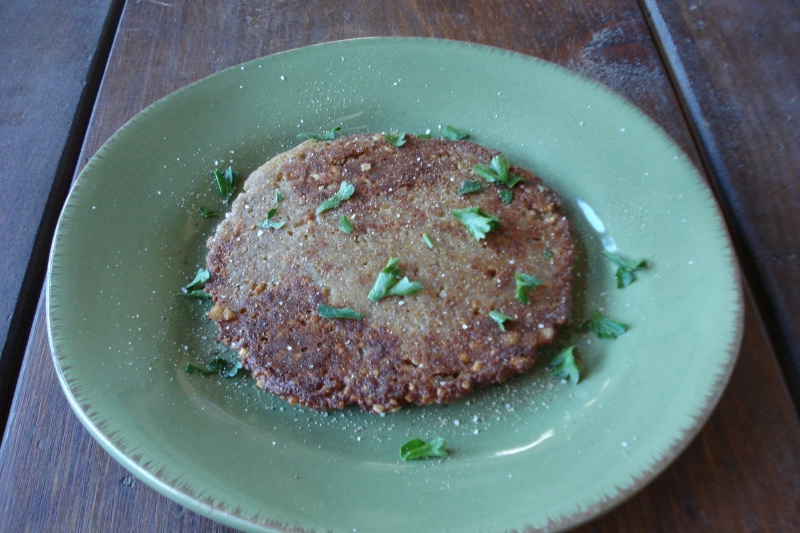Blueberry Muffins
1/2 cup honey
12 drops vanilla creme liquid stevia
3 eggs
2 cups almond flour
1/2 cup brown rice flour
1/2 tsp baking soda
1/2 tsp pure salt
1/2 cup plus 1 TBSP coconut oil (or butter), melted
1 cup blueberries (thawed, if using frozen)
Mix together honey, stevia & eggs. Then add the dry ingredients (both flours, baking soda & salt). Once combined, mix in melted coconut oil, then fold in blueberries. Bake for 24 minutes at 350.
______________________________________________________________________________________
SIDE NOTES:
~ Adapted from The Spunky Coconut Cookbook. First time my son tried these, he exclaimed something like….”If I didn’t know you made them, I would have thought they were junky muffins” A complement indeed! =)
~ SweetLeaf makes the vanilla creme liquid stevia. If using regular liquid stevia, you might want to add a little vanilla extract to compensate.
~ If using frozen blueberries (as I often do), your batter will turn blue when you mix them in. Not to worry. The inside of the muffin will have a slight blue-ish hue, but the taste is amazing no matter what color they turn out!
~ If using coconut oil, when melting, use very low heat & remove from burner right away (as the idea is to melt it, but to heat it as little as possible). If you add hot coconut oil directly into a bowl with cold eggs, the oil will harden. This is why I mix in the oil last (once the eggs are blended w/ everything else, it’s not an issue). An alternative is to let the eggs sit out at room temp for a little while before you crack them (or just use butter).
~ If using muffin papers, I recommend “If you care” brand which are unbleached. They can actually be reused if you keep them in a ziplock bag in the freezer between uses.
Dairy Free, Gluten Free, Egg Free, Nut Free, Sugar Free, Grain Free, Vegan, Raw
Favorite Cookbooks
I own countless cookbooks, and almost all of them have something worthwhile, but these are the ones I’ve found most useful over the years……
FRESH FOOD FAST
1000 VEGETARIAN RECIPES
THE COMPLETE ITALIAN VEGETARIAN
THE BEST RECIPE
COOKING THE WHOLE FOODS WAY
COOKING WITH COCONUT FLOUR
THE SPUNKY COCONUT COOKBOOK
RAW FOOD MADE EASY
VIVE LA VEGAN
If anyone would like to share the titles of the cookbooks they couldn’t live w/o, feel free to comment!
How to Eat Locally
EATING LOCALLY – SOME OF THE BENEFITS:
At some point, while biting into a New Zealand Braeburn, it occurred to me just how ridiculous it was that the apple in my hand was grown on a different continent, having traveled perhaps 8,000 miles to reach me, even though we produce thousands of juicy apples here in Upstate, NY. It made me wonder if there was a New Zealander in the same predicament – holding a NY McIntosh in one hand, and scratching his head w/ the other. What a waste! But not only that….who knows how long it took that New Zealand apple to get to my local grocery store. And then, how long was it sitting there, before I came along and picked it up? The longer produce sits around, the more nutrients and flavor are lost.
Knowing that each fresh food item in our refrigerator travels an average of 1,500 miles to get there, it’s easy to see how bypassing all that gas-guzzling transportation can make a big impact on our environment, ultimately helping to reduce global warming.
Of course, locally grown food is fresher, more nutritious & tastes better, as it’s been allowed to ripen on the vine. Produce that needs to travel great distances must be picked “green” – long before optimal harvest time. If a batch of peaches were picked at perfect ripeness and shipped from Georgia to NY, they’d arrive more like peach soup (this is why they’re picked hard & green). On the other hand, some lucky duck in Georgia plucks a tender, juicy one, and lets it fall apart where it’s supposed to – inside a mouth as opposed to a truck.
Eating locally encourages variety. Ever eaten kohlrabi, garlic scapes, celeriac, or chinese cabbage? I, for one, hadn’t, until I joined my local CSA. Of course, we don’t always like every new food we try, but at the same time, we’ve gotten very attached to some we never would have considered previously.
When buying directly from family owned farms, it eliminates many levels of the middle-man, who combined, normally take an 80% cut of every sale, leaving only 20% for the farmers. When small farms receive the support they need, directly from the community, they can maintain, and even thrive, keeping farm land, farm land, and not losing it to another development project.
Lastly, it’s simply the way nature intended it. It’s good for us & the planet. It just makes sense.
_____________________________________________________________________________________
HOW TO DO IT….
~ JOIN A CSA FARM (Community Supported agriculture). For those unaware of the concept, this entails finding a local farm, paying a set price upfront, then, come June (through Oct or Nov), pick up a weekly box with a mixture of whatever produce is ready for harvest. This usually has to be arranged by January if you want to get in for the upcoming spring/summer/autumn harvest. If you don’t like surprises, see option 2!
~ FARMERS MARKETS – Find out when and where the closest farmers market will be setting up, and stop by weekly to see what kind of fresh goodies are available. This way, you can pick and choose exactly what you want.
~ BUY DIRECTLY FROM LOCAL FARMS AND CO-OPS – Whether it’s a roadside stand, store front farm, or a local co-op, they’re all great resources to take advantage of.
~ Some grocery stores have a “LOCALLY GROWN” area. If yours doesn’t, simply ask which foods they regularly buy locally. The more they receive such inquiries, the more they’ll look into the subject themselves. Likewise, support local restaurants that buy some portion of their food locally.
~ If you want to try out your own green thumb….PLANT A GARDEN IN YOUR BACKYARD, OR AT A COMMUNITY GARDEN PLOT.
~ If inclined, PRESERVE FOOD FROM THE SEASON BY FREEZING, DRYING, FERMENTING, AND CANNING. This way, you can enjoy some locally grown food, well into winter.
_______________________________________________________________________
All these efforts helps to move us away from the industrial food system. Anyone who takes even a small peek at what goes on behind those big industrial doors, knows this is a good thing!
______________________________________________________________________________________
A few links on how to find local food in your area:
______________________________________________________________________________________
Ps – Have you ever seen such beautiful colors!? (Click on photos for the full effect!) It’s like real life Willie Wonka land! I had a difficult time deciding between a vase and a saute pan =)
This gorgeous swiss chard was nurtured to life by the careful attention, and back-breaking labor, provided by the good farmers of Old Path Farm Sauquoit, NY.
__________________________________________________________________________
Quick Tomato Sauce
1 28 oz package diced tomatoes
2 medium garlic cloves
1 tsp water
2 TBSP extra virgin olive oil
3 TBSP coarsely chopped fresh basil (or more)
1/4 tsp sugar (optional)
1/2 tsp plus 1 TBSP pure salt
1 additional TBSP extra-virgin olive oil
1/4 cup reserved cooking liquid (pasta water)
1 lb whole grain pasta
- Bring water to a boil in large pot, add 1 TBSP salt along with the pasta and cook until al dente.
- Meanwhile, crush garlic into a small bowl & stir in 1 tsp water.
- Heat 2 TBSP oil in a 10 inch saute pan over medium heat and saute garlic/water mixture until fragrant but not brown, approx 2 mins.
- Stir in tomatoes (with their juice) and simmer partially covered approx 10 mins.
- Stir in basil, sugar & 1/2 tsp salt.
- Reserve 1/4 cup cooking water before draining pasta.
- Add pasta, reserved cooking water, & remaining 1 TBSP of oil into the sauce pan.
- Cook together over medium heat for 1 min, stirring constantly, and serve immediately.
Optional Add-in:
8 oz tempeh (one package)
2 TBSP extra virgin olive oil
2 TBSP tamari/soy sauce
- Slice tempeh into small rectangles & toss in a bowl with the oil & soy sauce.
- Let marinate for 1 hour.
- Preheat oven to 350.
- Place tempeh on a cookie sheet (I like to line w/ parchment paper) and bake 10 – 15 mins.
- Once sauce is done, mix in tempeh.
______________________________________________________________________________________
SIDE NOTES:
~ The “quick tomato sauce” recipe was adapted from “The Best Recipe” cookbook.
~ I always use a lot of extra basil.
~ This is something that can really be thrown together quickly. If opting to use tempeh, just remember to toss it together w/ the oil & soy sauce an hour or so before you want to eat so it has time to marinate. Put the tempeh in the oven when you start preparing the sauce.
Dairy Free, Gluten Free, Egg Free, Nut Free, Sugar Free, Grain Free, Vegan, RawIf eating gluten and/or sugar free, use an appropriate pasta (brown rice pasta is our personal preference), “soy” tempeh, gluten free tamari, and double check labels of any packaged products such as tomatoes. If strictly avoiding sugar, use 1 drop of liquid stevia instead.
Organic Foods Prioritized
WHY ORGANIC?
FACT – Pesticides are designed to kill living organisms. I suppose one could take that & go wherever they want with it, but common sense tells me I should keep these chemicals as far away from my body as possible. Beyond common sense, there’s a growing body of scientific evidence linking these chemicals to human diseases, such as brain/nervous system toxicity, cancer, hormone dysfunction, and skin/eye/lung irritation.
______________________________________________________________________
Number 1 most important product to buy organic – BUTTER.
Animals, like humans, store toxins in their fat (toxins get deposited in fat cells, as an effort by the body to keep them from reaching vital organs). Butter is almost pure fat, so non-organic varieties will carry relatively high concentrations of whatever toxins that particular animal was exposed to. For this reason, butter coming from organically raised cows is best.
______________________________________________________________________
Number 2 most important product to buy organic – MEAT.
Most commercially available meat comes from animals that have been raised in huge feedlots, fed genetically modified, pesticide laden grains – or equally as bad – GMO soy feed which is too high in protein & therefore toxic to their livers. To cut costs, sometimes “by-product feedstuff” is added to the feed, which sometimes isn’t even food (chicken feathers, garbage, stale pastry, and candy). Sometimes cows are given pieces of other cows (a potential cause of mad-cow disease). Additionally, they’re injected with steroids to make their meat tender and given growth hormones to speed growth rate. Some of the animals grow so quickly and unnaturally, that their legs often collapse as they try to stand and support their own weight. Lastly, the animals are routinely given antibiotics to ward off infections that inevitably result from poor diet & crowded conditions.
Of course, the problem with all of this (besides animals living in misery for their short, uncomfortable existence), is that all these chemicals and additives become part of the meat, dairy, and eggs that we eat. Then they become part of us.
Organic meat comes from animals that (at the very least) have been raised on organic feed (no pesticides), and not given any hormones or antibiotics. Some organically raised animals live a better, more humane life then their unfortunate commercially raised cousins, but this is not always the case (depends on the values of each particular farmer).
In reference to cows, bison, lambs and goats, perhaps even more important than the organic certification is whether or not the animals were grass-fed. If they were, their meat will be much more nutritious than meat from grain fed animals – containing more vitamin E, beta-carotene, vitamin C, omega 3 fatty acids, and conjugated linoleic acid (CLA). Personally, I would choose grass-fed beef without organic certification over organic beef coming from cows raised on grain.
As for the CHICKENS…..Organic, free-range chickens are best. If you can get them directly from a local farm – even better. I’ve heard several verbal testimonies from friends and family – saying how absolutely amazed they were when they made the switch from standard, store-bought chicken to the good stuff. “The taste was entirely different….it actually tasted like chicken.” Similarly, if you’ve never had a local, organic egg, you’ll be pleasantly surprised at the fresh taste & bright yellow yolk. Check out your local farmers market if you don’t already have a source for local eggs (if not, free-range organic from the store is the next best thing).
As far as MILK goes, certified organic, raw milk from grass-fed cows is best. This caliber of milk is difficult, but not impossible to find, depending on where you live. If you can’t get it, at the very least, it’s a good idea to look for milk from cows that weren’t given growth hormone rBGH (a genetically engineered hormone that boosts milk production). This growth hormone causes the majority of cows to get mastitis (a painful and pussy udder infection) that’s treated with antibiotics. The antibiotics make their way into the milk, and then ultimately, into us as consumers. On a side note – marketing twists over the years have led us to believe that 2%, 1%, and skim are best, but these types of milks have problems of their own which I’ll go into at a later date.
I feel like I can keep going, but in an effort not to wander too far off topic, I’ll stop here, knowing that I’ll eventually have an entire page dedicated to this subject. The following links are great resources for finding high quality animal products.
Eatwild.com, which is a great informational resource, had a nice, little summary on one of their pages….
“The Healthiest Choice. When you choose to eat meat, eggs, and dairy products from animals raised on pasture, you are improving the welfare of the animals, helping to put an end to environmental degradation, helping small-scale ranchers and farmers make a living from the land, helping to sustain rural communities, and giving your family the healthiest possible food. It’s a win-win-win-win situation.”
________________________________________________________________________
Next is PRODUCE
It’s important to note, even though organic produce is best, eating any fruits and vegetables, regardless of how they’re cultivated, is still better than not eating them at all. In a perfect world, we’d eat everything organic, but of course, that’s not possible due to cost and availability. The next best thing is to know which crops tend to carry the most residue, and likewise, which carry the least.
The list below, taken directly from the Environmental Working Group’s website ranks fruits and vegetables from BEST TO WORST. In other words, produce at the top of the list are the least contaminated with pesticides (ok to buy non-organic), while the ones toward the bottom of the list contain the heaviest chemical residue (best to purchase organic). Again, keeping things in perspective, it’s better to eat a non-organic pear than a donut =) Please see www.ewg.org for more details.
Updated 6/13/11
1. Onions (BEST)
2. Sweet Corn
3. Pineapples
4. Avocado
5. Asparagus
6. Sweet Peas (frozen)
7. Mango
8. Eggplant
9. Cantaloupe (domestic)
10. Kiwi
11. Cabbage
12. Watermelon
13. Sweet Potatoes
14. Grapefruit
15. Mushrooms
16. Winter Squash
17. Plums (domestic)
18. Cranberries
19. Papaya
20. Tomatoes
21. Cauliflower
22. Honeydew Melon
23. Cantaloupe (imported)
24. Bananas
25. Green Onions
26. Broccoli
27. Oranges
28. Summer Squash
29. Green Beans (imported)
30. Raspberries Cucumbers (imported)
31. Blueberries (imported)
32. Plums (imported)
33. Carrots
34. Green Beans (domestic)
35. Hot Peppers
36. Nectarines (domestic)
37. Pears
38. Cherries
39. Grapes (domestic)
40. Cucumbers
41. Cilantro
42. Kale / Collard Greens
43. Lettuce
44. Blueberries (domestic)
45. Potatoes
46. Sweet Bell Peppers
47. Grapes (imported)
48. Nectarines – imported
49. Spinach
50. Peaches
51. Strawberries
52. Celery
53. Apples (WORST)
_______________________________________________________________________
Wasn’t sure exactly how to “rank” this, but I also highly recommend using ORGANIC BABY FOOD for obvious reasons. I remember using “Earth’s Best” before my kids grew chompers. I think it was the only organic choice back then, but there are probably others by now. Of course, if you have the time, making & freezing your own baby food is less expensive and healthier.
________________________________________________________________________
Beyond food…….. COTTON
“Farmers in the United States apply nearly one-third of a pound of chemical fertilizers and pesticides for every pound of cotton harvested. When all nineteen cotton-growing states are tallied, cotton crops account for twenty-five percent of all the pesticides used in the U.S. Some of these chemicals are among the most toxic classified by the U.S. Environmental Protection Agency. In developing countries, where regulations are less stringent, the amount of herbicides and insecticides and their toxicity is often greater than in the U.S.”
wwworganicconsumersassociation.org
That being said, there is no evidence to date that pesticide residues exist in non-organic cotton fabric. The US does not do testing on this, but according to expert, Mary Cordaro, tests in Germany confirm that toxic pesticide residue only exist in cotton batting (mattresses, pillows, etc). So, we might want to contemplate our pillows, since we have our faces in them for a third of our lives, and when it’s time to replace the mattress, something to consider as well.
Although non-organic cotton fabric is safe to wear, I don’t interpret that to mean we can pretend the entire cotton-chemical business doesn’t exist and doesn’t affect us. It’s huge & it does affect all of us – As year after year, billions of pounds of these toxic chemicals reach us anyway, via air, water, and soil. By supporting the Organic Cotton Industry, we’re reducing the amount of toxins let loose on this Earth. A worthwhile endeavour indeed. It’s not practical to do 100% with this type of thing, but if we all did what we could, just a little bit, the impact would be enormous.
Here are some of the organic clothing companies I like to support:
In regard to sheets, although it’s not necessary to buy organic, the one thing I will mention to watch out for are “easy care” “permanent press” or “wrinkle free” sheets (unless you don’t mind snuggling up with formaldehyde).
____________________________________________________________________________________
A good alternative to cotton is BAMBOO (which is used to make clothing and bedding of all sorts). It’s extremely soft – almost silky.
Here are some facts borrowed from www.greenearthbamboo.com.
~ Sustainability – The bamboo in China, where our bamboo products begin their life, grows naturally and does not require the use of pesticides, herbicides, or irrigation, other than the natural rainfall that it receives. Also, the bamboo does not require planting as the stalks can be cut off above ground and they will continue to grow, ready for harvest again in just a few short years. Compare this to a tree that may take 70 years to reach maturity. In addition bamboo has a vast root system network that constantly sprouts new shoots. Unlike many other resources, bamboo does not require gas guzzling tractors, pesticides, and herbicides to harvest and bring to production.
~ Bamboo is naturally antimicrobial and anti-fungal in its raw state.
~ Bamboo contains a natural agent called bamboo kun which requires no harmful chemicals to prevent bacteria and fungus from cultivating on it–keeping the fabric odor free. This allows for less washing which saves on energy, time and money.
~ Bamboo is extremely soft.
~ Bamboo is practical. Bamboo is more durable and less expensive than silk or cashmere, but has a very high soil release value and can be conveniently cleaned in your washer and dryer.
~ Bamboo is comfortable. Bamboo clothing feels good on your skin, and it’s breathable, which keeps you drier. Bamboo fabric also acts as a thermal regulator to your body temperature.
~ Bamboo is hypoallergenic. Did you know that Bamboo’s organic and natural fiber properties make it naturally hypoallergenic? It is non-irritating to the skin, and works extremely well for anyone having allergies, eczema, dermatitis or other skin sensitivities.
My Oils Of Choice
You can, of course, substitute any oil you like in any recipe, but here’s a brief summary, if interested, of the reasons I choose the oils I do.
UPDATED – JUNE 10, 2012
_____________________________________________________________________________________________________
QUICK OVERVIEW…..
Coconut oil, ghee, and butter are my favorite oils for cooking and baking, as they’re delicious & have a very high smoke point. This means they’re heat stable and won’t oxidize (turn rancid during the cooking process – releasing harmful free radicals within the body).
Olive oil and macadamia nut oil are great drizzled over cooked foods for flavor, or used to make homemade salad dressings.
Scroll down for more details….
____________________________________________________________________________________________________
COCONUT OIL
Besides its delicious flavor, coconut oil has many health attributes. It’s proven to be antiviral, antibacterial and antifungal. This means it helps to combat undesirable bacteria, viral organisms, and yeast/fungus within the body. Nice! It’s also one of the few sources of lauric acid, which enhances brain function and the immune system. Lauric acid is actually the component in breast milk that gives breast-fed babies that amazing immunity boost. Not only is it lower in calories than most other fats & oils, it actually stimulates metabolism and encourages weight loss.
Due to the fact that coconut oil contains medium-chain fatty acids, it goes straight from the intestines to the liver and is immediately used for energy (as opposed to long chain fatty acids found in most vegetable & seed oils, that are almost always stored as fat).
Coconut oil is also amazing applied topically to the skin – very moisturizing and healing (& often a key ingredient in natural skin care products).
In any case, it happens to be the oil I use most. Fantastic for baking, sauteing and frying. It works for us in most any recipe. Store coconut oil tightly covered in a dark cabinet. It’s shelf life at room temperature is very long – a year or more.
____________________________________________________________________________________________________
GHEE
Butter is made of mostly fat, but also contains water (18%), and protein (milk solids) (2%). Ghee is produced by cooking butter until the water evaporates and the milk solids float to the top. You then skim off and discard the milk solids, and are left with pure butter fat – ghee.
There are a few high quality ghee manufacturers out there, but it’s easy to make at home if you’d prefer (using the method described above). Ghee has a longer shelf life than butter, and does not need to be refrigerated if used up within 2 to 3 months (will last up to a year in the fridge). It’s also lactose and casein free, so can usually be tolerated by those with milk sensitivities.
When I want a buttery flavor, I cook with ghee as it’s very heat stable, even over high heat, and very delicious. Organic ghee, made from grass-fed cows is best.
____________________________________________________________________________________________________
COCONUT-GHEE
If you’re not sure you’d like the flavor of coconut oil, but are interested in the health benefits, there’s a product called “Coconut Ghee” made by Green Pastures which is a 75/25 blend of coconut oil and ghee. This product gives the buttery taste you’re probably used to, while also offering all the health benefits of coconut oil. Might be a good transition oil if you intend to go full-fledged coconut-y =) Flavor wise, we had no problem using the straight coconut oil, right from the get-go. It’s delicious, but this is a good alternative if you have reservations.
____________________________________________________________________________________________________
BUTTER
There’s a lot of good information on my “real butter” page, so I’ll try not to be repetitive here. A few things to note however…. Animals, like humans, store toxins in their fat. Butter is almost pure fat, so if you’re eating non-organic butter, whatever toxins that animal was exposed to (pesticides/antibiotics/hormones) will be very concentrated in the butter. For this reason, butter (and ghee) from organically raised cows is best. In fact, if you only purchase one organic food item, butter should be it.
Also, grass-fed cows will produce butter that contains Conjugated Linoleic Acid (CLA), which has strong anticancer properties, encourages the buildup of muscle, and prevents weight gain (CLA is not present in butter made from grain-fed cows).
Lastly, butter not only provides essential nutrients itself, but when combining butter with other foods (as is always the case), it helps your body to absorb and assimilate the vitamins and minerals within those foods. It also slows down the absorption of sugar (from the carbohydrates you’re eating it with). So, forget the old myths & enjoy the rich, satisfying, creamy taste of fresh butter – knowing you’re doing your body good.
If you can get raw, organic butter from a local dairy farm, all the better, but here are a few good options you can sometimes find at the local grocer (or have them order for you):
____________________________________________________________________________________________________
OLIVE OIL
Olive oil is a delicious, healthy oil, best reserved for flavoring after cooking, as it easily becomes damaged from heat. If you must cook with it for a particular dish, use very low heat to try to prevent the oil from oxidizing and becoming rancid. Its best uses are for salad dressing, and drizzling over cooked foods. For your Italian dishes, consider cooking with butter or ghee, and then simply passing fresh olive oil at the table to add that delicious, mediterranean flavor.
Olive oil has surely stood the test of time, and is one of the rare few, healthy oils from a plant source. Keep in mind though, unlike coconut oil and butter which are comprised of medium-chain fatty acids, it can contribute to weight gain due to its long-chain fatty acid composition. It is a great oil to include in your diet, but be careful not to over-do it.
Be sure to use high quality, cold pressed, extra virgin olive oil. A top-of-the-line olive oil may actually look cloudy (which means it was unfiltered) and golden-yellow (meaning it was made with fully ripened olives). Here are a few brands to consider seeking out:
____________________________________________________________________________________________________
MACADAMIA NUT OIL
In general, macadamia nut oil is a good choice. It’s very rich in monounsaturated fat – which has been shown in virtually every research study to be associated with lower rates of heart disease. This is the same component (monounsaturated fat) that gives olive oil its well-touted health benefits. Many oils have it actually, but way back when, the olive oil industry was the one who did the lobbying, so the FDA gave them, solely, the claim to fame. It’s all political! Monounsaturated fat is monounsaturated fat – no matter where it comes from, and macadamia nut oil actually has even more of it than olive oil, it just hasn’t been studied or marketed nearly as much.
Like olive oil, macadamia nut oil is best unheated, used for flavoring (as heat will turn the oil rancid rather quickly). Whenever possible, choose oils that are heat stable for cooking (coconut oil, butter, ghee).
One thing I can say for sure… As good as olive oil is, there are so many overly (and improperly) processed varieties these days that it makes it difficult to pick the right bottle. People don’t generally want to order these things on line, but it’s rare to find the good stuff locally. Be choosy – it’s important with everything, but even more so with oils. Since macadamia nut oils are few & far between, you’re much more likely to get a quality product. Personally, I don’t use macadamia nut oil, but two good suppliers I know of are vitalchoice.com or mac-nut-oil.com.
____________________________________________________________________________________________________
In summary, choosing the right oils is of utmost importance to your health.
Avoid refined oils (with the exception of coconut oil), glass containers are preferable when possible, and store your oils away from light and heat. Additionally, after you’ve used an oil, replace the cap immediately (don’t let it sit on the counter opened for 30 minutes while you prepare the rest of the meal), as air can damage the oil as well.
Important to note… The majority of fats in the diet should come from coconut oil, butter, ghee, and naturally raised animals.
____________________________________________________________________________________________________
When you think about it, it doesn’t make sense…. In the name of health, we’ve been pushed away from butter, coconut oil, and eggs (all natural super-foods), only to have them replaced with margarines, hydrogenated oils, and trans-fats. Although most of us have no problem at this point in time, accepting the fact that margarines, hydrogenated oils, and trans-fats are bad, it’s somehow harder to un-do the old propaganda, and accept the fact that many saturated fats are indeed good, and necessary for optimal health.
Excerpt from Sally Fallon’s “Nourishing Traditions” explaining why saturated fat is not (& never was) the problem.
“Before 1920 coronary heart disease was rare in America; so rare that when a young internist named Paul Dudley White introduced the German electrocardiograph to his colleagues at Harvard University, they advised him to concentrate on a more profitable branch of medicine. The new machine revealed the presence of arterial blockages, thus permitting early diagnosis of coronary heart disease. But in those days, clogged arteries were a medical rarity, and White had to search for patients who could benefit from his new technology. During the next forty years, however, the incidence of coronary heart disease rose dramatically, so much so that by the mid 1950s, heart disease was the leading cause of death among Americans. Today, heart disease causes at least 40 percent of all US deaths. If, as we have been told, heart disease is caused by consumption of saturated fats, one would expect to find a corresponding increase in saturated fats, in the American diet. Actually, the reverse is true. During the sixty-year period from 1910 to 1970, the proportion of traditional animal fat in the American diet declined from 83% to 62 percent, and butter consumption plummeted from 18 pounds per person per year to 4. During the same period the percentage of dietary vegetable oils in the form of margarine, shortening and refined oils increased about 400 percent while the consumption of sugar and processed foods increased about 60 percent.”
Banana Bread
1 ripe banana, mashed
8 eggs
1/2 cup coconut milk
1/2 cup natural sugar
1 tsp pure vanilla extract
1/2 tsp pure salt
3/4 cup coconut flour, sifted
1 tsp baking powder
1/2 cup walnuts (optional)
- Preheat oven to 350.
- Blend together mashed banana, eggs, coconut milk, sugar, stevia, vanilla, and salt.
- Combine coconut flour w/ baking powder & whisk thoroughly into batter until there are no lumps.
- Fold in nuts (if using).
- Pour into greased 9x5x3-inch loaf pan & bake for 60 mins.
- Remove from pan & cool on rack.
______________________________________________________________________________________
SIDE NOTES:
~ Adapted from Cooking w/ Coconut Flour.
~ To combine the coconut flour & baking powder, I always just put both ingredients through the sifter together.
~ My loaves don’t always slip out of the pan. If this is the case, don’t force it out. Just place the whole thing – pan & all – on a wire cooling rack.
Dairy Free, Gluten Free, Egg Free, Nut Free, Sugar Free, Grain Free, Vegan, Raw
If eating gluten free, be careful choosing your vanilla. If avoiding nuts, omit the walnuts.
~ Freezes well (I freeze individual slices which are great to pull out as needed for a school snack).
Indian Spiced Basmati Rice
1 TBSP coconut oil, butter, or ghee
1 three-inch cinnamon stick, broken in half
2 whole cloves
a good pinch of ground cardamom
1/4 cup thinly sliced onion
1 cup white basmati rice*
1 & 1/2 cups water
1 tsp pure salt
- Heat oil or butter in a medium saucepan over high heat until almost smoking.
- Add cinnamon, cardamom & cloves & cook, stirring until cinnamon unfurls & cardamom & cloves pop, less than a minute.
- Add onion & cook, stirring until translucent, about 2 minutes.
- Add rice and cook, stirring until fragrant, about 1 minute.
- Add water & salt; bring to boil.
- Reduce heat, cover tightly & simmer until all water has been absorbed, (17 minutes works for us).
- Let stand, covered, for 10 minutes, fluff with fork & serve.
Serves 3 as a side (I double this to feed a family of 4 w/ a little left over).
______________________________________________________________________________________
SIDE NOTES:
~ Adapted from “The Best Recipe” cookbook. We always have this along side INDIAN-SPICED-LENTILS-W-KALE. 5 star combination!
~ Remove the cloves & cinnamon sticks before serving.
Dairy Free, Gluten Free, Egg Free, Nut Free, Sugar Free, Grain Free, Vegan, RawIf eating dairy free, use coconut oil instead of butter.
~ *Been making this for years & tried using brown basmati at some point but it didn’t quite work. Since the cook time is about 3 times longer for brown rice, the onions almost completely disintegrated into the rice. Was disappointing for me, as I prefer brown rice to white, but really love the texture of the onions. What I was eventually able to make work was “truRoots” germinated brown rice. This type of brown rice has a cook time of only 25 minutes (instead of 50) so the onions hold up well. It’s an expensive product, but keep in mind that germinated grains (& nuts/seeds) are more easily digested and more nutritious. Of course, the white basmati is delicious in this recipe, and I most often make it the original way. I was determined though, to see if I could get it to work in some capacity for brown rice, & share the method in case anyone else was interested. If you choose to use the truRoots version, only use the 1 & 1/2 cups of water called for. (Normally, 1 cup of truRoots rice cooks in 2 cups of water, but it will end up being too wet in this recipe where onions are included).
Indian Spiced Lentils w/ Kale
1 cup lentils (green or brown)
1 tsp pure salt
1 bunch of kale, stems removed and chopped
2 TBSP coconut oil, butter, or ghee
1 heaping tsp ground coriander
1/2 heaping tsp ground cumin
1/2 heaping tsp ground mustard
1/2 heaping tsp hot red pepper flakes
2 garlic cloves minced
2 tsps minced fresh ginger root
- Bring lentils, 6 cups water, and salt to boil in medium saucepan; boil for 5 mins.
- Reduce heat; simmer until lentils are tender but still hold their shape, 20 – 25 mins
- Add kale during the last 5 mins of cooking.
- Meanwhile, heat oil (or butter) in large skillet over medium heat.
- Add coriander, cumin, mustard, & red pepper flakes; saute to combine flavors, about 1 min.
- Add garlic & ginger; saute until softened and fragrant, about 2 mins.
- Drain lentils, & kale and add to spice mixture.
- Simmer to blend flavors, 3 – 5 mins.
Adjust seasonings and serve (serves 4).
______________________________________________________________________________________
SIDE NOTES:
~ If you love lentils (like we do) & love Indian food (like we do) – try this recipe. So good & so healthy. Adapted from “The Best Recipe” cookbook.
~ We always have this with INDIAN-SPICED-BASMATI-RICE. Really can’t have one w/o the other – at least in this house! =)
~ For the coriander, cumin, ground mustard & red pepper flakes, I use very generous spoonfuls.
~ It’s ok if some of the liquid from the lentils/kale ends up in the pan. I just transfer it with a large mesh spoon (see “favorite gadgets” page under “kitchen tips”), but you can use a strainer if easier. The original recipe actually calls for 1 cup of the cooking liquid (from the lentils) to be reserved & added to the spice pan with the lentils. I used to prepare it that way, but found I like it better when only a small amount of liquid gets transferred.
Dairy Free, Gluten Free, Egg Free, Nut Free, Sugar Free, Grain Free, Vegan, RawIf eating dairy free, use coconut oil instead of butter.
Chickpea Patties
1 cup dry chickpeas soaked 24 hours
1 cup steel cut oats, soaked 4 – 8 hours
1/2 cup sunflower seeds, ground
1/2 cup whole grain flour (I use teff flour)
1 medium onion, finely chopped
2 TBSP tamari/soy sauce
2 TBSP melted butter, coconut oil, or ghee
2 tsps pure salt
1 well beaten large egg
- Rinse the soaked chickpeas thoroughly.
- Put the drained chickpeas in a food processor and process until coarsely ground.
- Drain the oats, add them to the chickpeas & process until combined.
- Add the remaining ingredients & combine.
- Tear off 12 square sheets of wax paper.
- Divide the bean mixture equally onto the 12 sheets.
- Shape & press the mixture into patties & fold them up individually in the wax paper.
- Place the burgers flat in a large ziplock freezer bag & freeze solid before cooking.
- When ready to cook, take burgers directly from freezer and put them in a lightly oiled, heated pan.
- Cook a few minutes on each side, until browned (time will vary depending on thickness).
______________________________________________________________________________________
SIDE NOTES:
~ We love these patties. Similar to falafel. They do take a little advance planning due to the soaking requirements, but it’s so easy to whirl everything together in the food processor, and I LOVE the fact that I can make them in advance, and just pull them out of the freezer as needed for a quick meal. You can use these as “burgers” on a whole grain bun, but we prefer them plain, as is, with a sprinkle of salt & pepper & some parsley if I happen to have it on hand. With a side vegetable and/or salad, this has become a meal we all look forward to.
~ I use my seed grinder (coffee grinder dedicated solely to seeds) to grind seeds into powder. Use a substitute if you prefer (extra flour, etc….)
~ I like to press the patties pretty thin before freezing. I also sometimes puree the onion in the food processor before I add anything else. This is just because one of the kids doesn’t like to “see” onions in their food. If a recipe looks good except for 1 or 2 things, there are usually ways of adjusting to make them work for you & your family. Most of the meals I make, change & evolve over time.
~ The last couple of times, I’ve doubled the recipe, making 24 patties, since I prefer to do more prep work ahead of time in order to enjoy the convenience of just pulling them out of the freezer for a few months . (But it’s always risky to double a recipe the first time you’re trying it. If by chance, you don’t like it….it’s a bummer!).
Dairy Free, Gluten Free, Egg Free, Nut Free, Sugar Free, Grain Free, Vegan, RawIf eating gluten free, be sure to use certified gluten free oats, a gluten free tamari, and a gluten free flour such as teff. If eating dairy free, use coconut oil instead of butter.





